When it comes to really knowing a country, the best is to focus first on a particular region and then make similar plans for the next trip to get to know the rest of its regions. That way, region by region, at a less touristy pace, you will be able to say that you really know and even lived the local culture. If we are talking about Northern Portugal though it is hard to skip Spain, namely Northern Spain. The fact is that both countries share a common past, which intertwined more times than one over the millennia. At some point it was even hard to say which was which, and if you feel like you really would like to understand the people and their culture, the best thing to do is to get the bigger picture.
With this in mind, we have gathered a list of the most amazing treasures in the North of both countries - cities and towns that are extra special because they represent the heart of a culture in the most authentic of ways. And the best part? They are so much less touristy than other locations in both countries! Here is a collection of well-preserved gems of Northern Portugal and Spain.
Viana do Castelo, Portugal
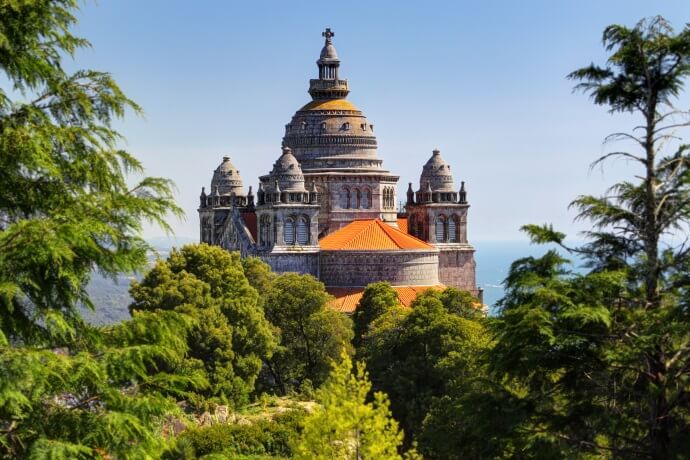
This beautiful coastal town on the estuary of the Lima river is located about 1 hour from Porto in the region of Minho, which borders Spain. If what you are looking for is tradition, then you will be sure to find it here. Walk in the incredibly well-preserved historic center and marvel at its panoply of monuments, with references to the Renaissance, Baroque and Art Deco dotting its cobbled streets, some of them surrounded by the ancient city walls. Take the elevator by the train station and go up the Mount of Santa Luzia, outside the city center, where in a dominant position stands the imposing Santuário do Sagrado Coração de Jesus (Sanctuary of the Sacred Heart of Jesus), whose construction begun in 1903 and was inspired by the Sacré Cœur Basilica in Paris. From the top you will be stunned by a wide view of the city, the Lima river estuary, the surrounding greenery and the sea. A perfect sport for superb photos!
If you are lucky enough to be visiting around the 20th of August, then you will get the chance to take part in the city’s celebrations of the patron saint of the local fishermen, Nossa Senhora da Agonia (Our Lady of Agony). The festivities include a kilometers-long procession, where reenactments of the city’s traditional activities and local costumes are held. Let yourself dance to the music of drums echoing along the streets and follow the parade of young women showing off their astonishing family filigree heirlooms made out of gold and silver, worn against the backdrop of their black dresses with white lace collars.
Whatever time of the year, make sure you try the fish and shellfish in Viana, which is of outstanding quality, and dare to try the local specialty of Arroz de Sarrabulho, a traditional dish of the Minho region, made with several types of meat (pork, beef and chicken), pork blood and several spices. It is served with shredded meat, and often accompanied by rojões (roast pork), Minho style. A glass of Vinho Verde is also in order to help digest everything. Viana do Castelo is definitely a gem of the North of Portugal!
Guimarães, Portugal
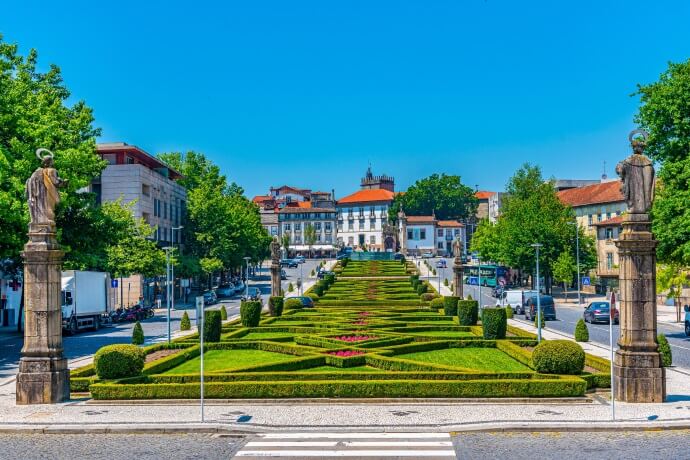
The medieval town that was the birthplace of Portugal as a nation in the 12th century has more wonders than one to justify a detour of maybe even several days. It is conveniently located less than 1 hour driving from Porto in the Minho region, and it is also served by buses and trains from there.
A walk through Guimarães is like a walk through time. In the heart of the downtown, in the Oliveira square, stands the 14th-century Padrão do Salado, a monument celebrating the victory of the Salado battle by the Portuguese; the Nossa Senhora da Oliveira Church and the Church of the Colegiado (Collegiate), which houses the famous Alberto Sampaio Museum, an homage to the Historian of the 19th century who was passionate about his city’s history and culture.
Enjoy a good cup of coffee or a sip of liquor at Santiago Square, which used to welcome the pilgrims on their way to Santiago de Compostela in the Middle Ages, and today welcomes residents and tourists in its restaurants and esplanades.
One other unmissable site in Guimarães is the Largo do Toural, with its five-hundred-year-old fountain and D. João I Street, which in the Middle Ages was the access road to Porto. It boasts old houses with wooden balustrades and 16th-century facades.
A little further on is the old municipal market building, which today houses the Plataforma das Artes, a multidisciplinary Arts center, and the Centro de Artes Internacional José de Guimarães, home to a collection of works of this renowned artist, a native of the city.
Guimarães has much more to discover besides its grandiose monuments - the good Minho gastronomy is certainly one of the many attractions of this city. The delicious bacalhau (cod), rojões (fried pork meat cubes), oven-roasted kid and veal, as well as the typical bucho recheado, a rich sausage filled with different meats and even rice, are some of the best-known flavors of Guimarães.
Much influenced by its religious roots, the confectionery displays true treasures of the Portuguese national gastronomy, such as Toucinho do Céu (a pudding made with sugar shredded almonds and lots of eggs) and Tortas de Guimarães (a puff pastry half-moon in shape filled with almonds, cinnamon and eggs). Guimarães is a world within itself and as soon as you step into the city you will realize that!
Gerês National Park, Portugal
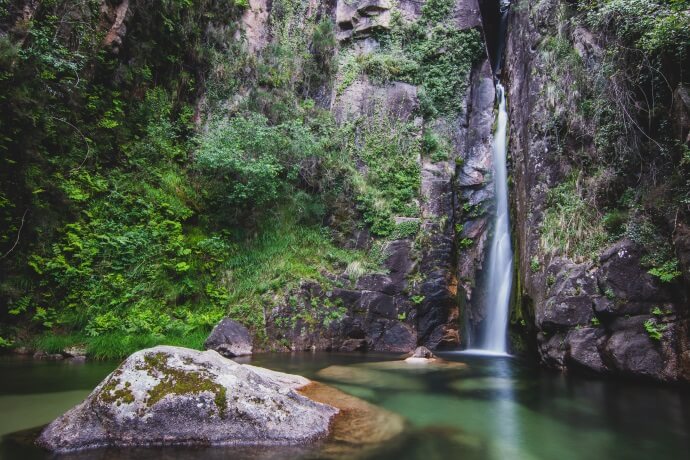
The only National Park of Portugal, Gerês, is a magical place of legends and myths but also of a spectacular array of fauna and flora and of a real cocoon for a specific culture, reminiscing of the Celtic, unique in Portugal and even in Europe. Having an impressive array of 240 species of vertebrate fauna identified in the territory and 1100 species of flora, in addition to 500 sites of historical and archaeological interest, the National Park of Peneda-Gerês is considered a World Biosphere Reserve by UNESCO.
Getting to Gerês from Porto by car is easy, and the journey will take you less than 1h30m. However, driving within the park may present some challenges, some of them quite unusual. You may find yourself driving along the Roman road, the geira, over 2000 years old, that would go from Braga in Portugal to Astorga in Spain; or you may have to stop for a moment to fully enjoy the view of a herd of wild horses crossing the mountains, or even to figure out what the old stone walls in the middle of the hills in Fafião are - and later find out these are what is called the “fojo do lobo”, a complex, maze-like ancient wolf traps made of parts of the local boulders.
The region’s past can be seen in the Castro Laboreiro and Lindoso castles, in the megalithic monuments, and in the different remains that hold testimony to the Roman occupation. In these curious villages, the architecture of the terraces, granaries, and the freshness of the lime meadows, enliven a picture in which a life deeply linked with the rural world is still very much present. Also, nature in its purest condition, perfectly visible in the forests, the cliffs, and the numerous waterfalls, lakes and lagoons, make of Gerês National Park a perfect retreat from the hustle and bustle of daily life.
Ribeira Sacra, Monforte de Lemos, Spain
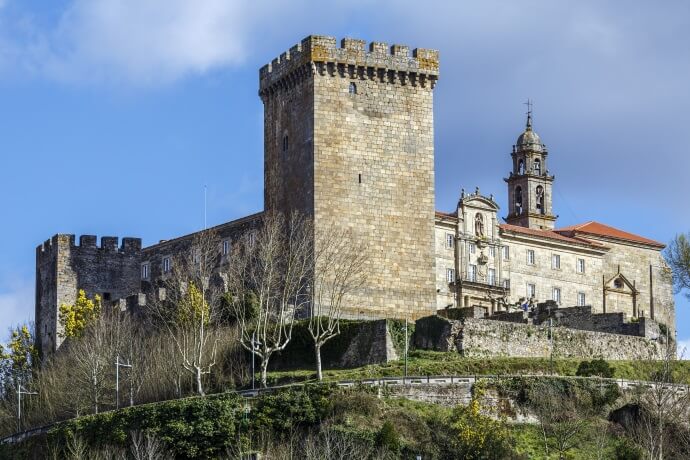
The Ribeira Sacra region, in the municipality of Monforte de Lemos, located a little over 1h30 minutes from Vigo, is one of Galicia's most incredible places! Its rivers, landscape, wealth of Romanesque monuments and cultivation of Mencía grapes form an astounding ensemble that has been a well-kept secret of the region so far.
Monforte de Lemos, is the geographical center of the area and also the only city. Its origin is to be found on Mount San Vicente. This stunning view point overlooking the city was originally built and known by the Romans as “Castrum Dactonium”. In the medieval period, Monforte was a unique example of a feudal city-fortress, built around a monastery, with a castle standing on a strategic hill (Mount San Vicente) and surrounded by a walled area dotted with defensive towers. Some of the 13th and 15th centuries walls, towers and gateways to the town are still standing.
The truth is that within the city you will find many interesting locations worthy of a visit, such as the medieval bridge, the Clarissan Sacred Art Museum and the Muíños de Antero Stately Home, among others.
Monforte grew around the river Cabe, which runs through the center, with a splendid promenade on the banks and the railway. Actually, the impact made by the railway on Monforte was so deep that, after its inauguration, Alfonso XII granted Monforte the status of city in 1885. Nowadays, this railway tradition has resulted in Monforte becoming the home of the Galician Railway Museum.
The area is a renowned wine-growing region and this tradition has transformed the city into the site of the Ribeira Sacra Wine Centre. This cultural center promotes the local wine region and organizes wine tours to the area’s vineyards and wineries, which are within easy reach from the city. To be honest, the only difficult thing about Monforte de Lemos and Ribeira Sacra is to leave!
Cangas de Onís, Spain
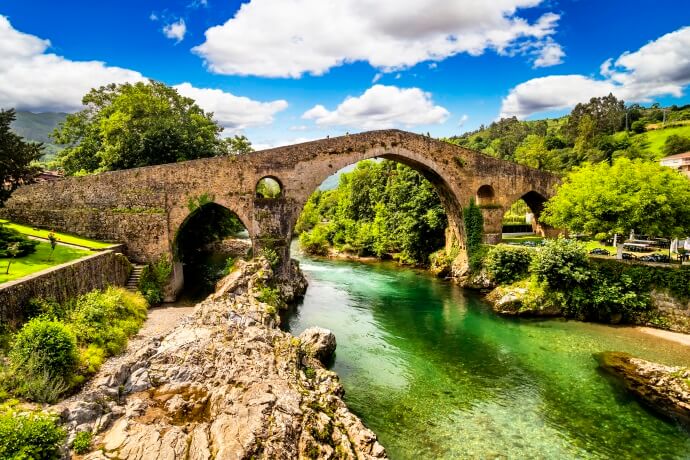
If we had to define Cangas de Onís in the region of Asturias, in Spain, we would probably quite simply use the words “out of this world”. About 1 hour from either Gijón or Oviedo, Cangas de Onís is the capital of the area of the same name. Nestled between the peaks of the Picos de Europa and the Sella River, the council of Cangas de Onís is an open door to lovers of nature, history, and, of course, gastronomy.
With its surrounding green landscapes and its consistent cattle breeding, the region’s fame for incredible cheese production is enough of an argument for many “foodies” to come here. At the same time, the calm and tranquility that is breathed in its landscapes make of this a dream place for those who seek to disconnect from their routine on a rural getaway.
The town of Cangas de Onís itself sits peacefully in the valley formed by the rivers Sella and Güeña, and is best known for its picturesque Roman Bridge, declared a Historic-Artistic Site in 1931. The bridge has five arches, three of them pointed. Hanging from its center is a reproduction of the Victoria Cross.
Another incredibly photogenic site is the hermitage of Santa Cruz, a structure built on a dolmen in 437, and rebuilt in the 8th century to guard the Victoria Cross! The last rebuilding works that were carried out took place after the Spanish Civil War already in the 20th century, and uncovered the dolmen, which to everyone’s astonishment was verified to date from 3,000 BC.
A walk through the town’s center will reveal other interesting buildings, such as the Chapel of San Antonio, from the 16th century; the Cortés Palace, in Renaissance style, and the City Hall, from the late 19th century. The reasons are many yet it is still hard to give you the right picture of the paradise we are talking about!
Gijón, Spain
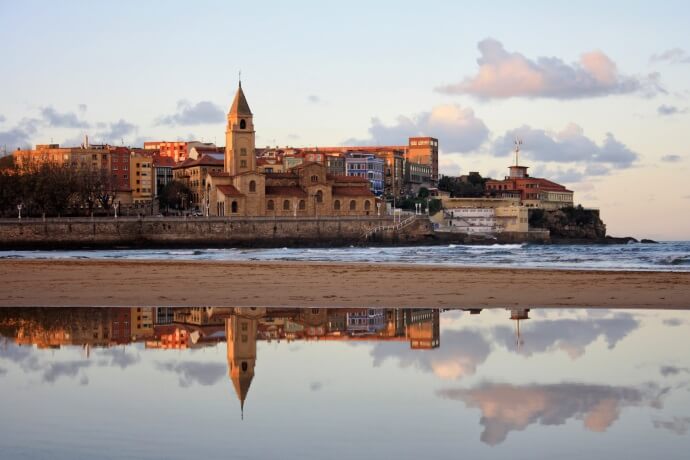
This impressive Spanish city is located in the region of Asturias, a little less than 3 hours from Bilbao. Surrounded by pristine beaches and mountains, Gijón is the largest city in Asturias. Once famous for its industrial past, the city has since reinvented its architecture, presenting nowadays splendid seaside promenades, renewed neighborhoods with restaurants, bars and many cultural initiatives.
The old fishermen's quarter is located on a promontory known as Cimadevilla. This is where Gijón was officially born and it is in this area that you will find the Cerro de Santa Catalina, a park with incredible views and an ancient fort decorated with a sculpture by the Spanish Basque sculptor Eduardo Chilida.
Further down, the walk along the coast at San Llorienzo beach provides some amazing views: crystal clear beaches, promontories, patches of woods, as well as an unusual collection of public art, which adds an interesting decoration to the surrounding landscape.
The historic quarter lies inside the old Roman wall. The wall is no longer there, but on-site remains a structure reminiscent of its layout. From there on in, there are narrow streets, with a medieval design, where some examples of buildings of vernacular architecture persist, such as traditional fishermen's-houses with wooden balconies with flower pots.
In culinary terms, Gijón and the surrounding region are some of the most interesting in Spain. The official drink of Asturias, cider, more than just apple wine, is a symbol of regional identity, and the fuel for all sorts of celebrations. The cheeses are, as in other parts of the region, of the best quality, and one can easily find a variety in the town's small restaurants. For example, the Afuega'l Pitu cheese (cow's milk) and the Cabrales cheese (blue, mixed), or other strong and intense cheeses make a good match for the freshness of the cider. Gijón’s region is definitely one of the gems of Northern Spain, waiting to be discovered.
Bilbao, Spain
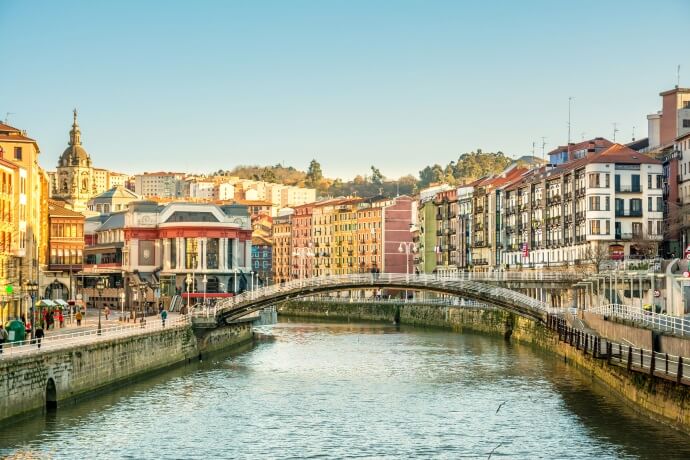
Bilbao is the vibrant capital city of the Basque Country in Spain. Surrounded by a vast green region of woods, mountains and even the ocean, Bilbao grew beyond its rural tradition to become one of the most successful industrial areas in the country. For that reason, Bilbao was for decades overlooked as a touristic destination, but has in recent years turned that tendency around, and is now ready to prove that it is totally worthy of an extended visit.
Although Bilbao follows many of the fundamental elements of the Basque culture, such as the language (Basque) and the use of the txapela (Basque beret), there are some peculiarities that define proper Bilbao traits. These can be found, for example, in some characteristic words or in the local musical genre.
A walk through Bilbao is a real shower of culture: there are more than ten museums in Bilbao, covering various branches of the arts, sciences and sports. Probably the most remarkable is the Guggenheim Museum Bilbao, part of the Solomon R. Guggenheim Foundation, the work of Canadian architect Frank Gehry, which opened in 1997. Its permanent collection is based on the visual arts movement created after the second half of the 20th century, but temporary exhibitions have a wider variety of themes, including different art forms from around the world.
The city also hosts numerous annual art festivals, often sponsored by the municipality, so it is really impossible that nothing is going on in the city when you go to visit! Bilbao's most popular festival is "Semana Grande" (Aste Nagusia in Basque), which has been celebrated annually since 1978, for nine days, starting the Saturday before August 22. During Semana Grande, the municipality organizes cultural activities such as concerts, plays, and traditional bull races.
As far as food and wine is concerned, Bilbao's gastronomy could hardly get any better! The region’s cuisine is based mainly on sea and river food, such as angulas (baby eels) and codfish. As in other parts of the Iberian Peninsula, Bacalao (cod) has played a vital role in times of need. Some of the best-known dishes are bacalao al pil pil (codfish in an olive oil, garlic and chilli pepper sauce); bacalao a la vizcaína (codfish in a tomato, bell pepper and garlic sauce); merluza en salsa verde (hake in a green white wine, parsley and white asparagus sauce); chipirones or calamares en su tinta (squid served with the natural ink of the animal). If you have a sweet tooth, then it might happen that you fall in love with Bilbao’s confectionery, from which the canutilos (cannoli-like sweets) are the best example. The most outstanding of beverages is the fruity chacolí, a white wine which is a trademark of the region. Food and culture walk hand in hand in Bilbao, and the choices are incredibly varied in both subjects!
Hondarribia, Spain
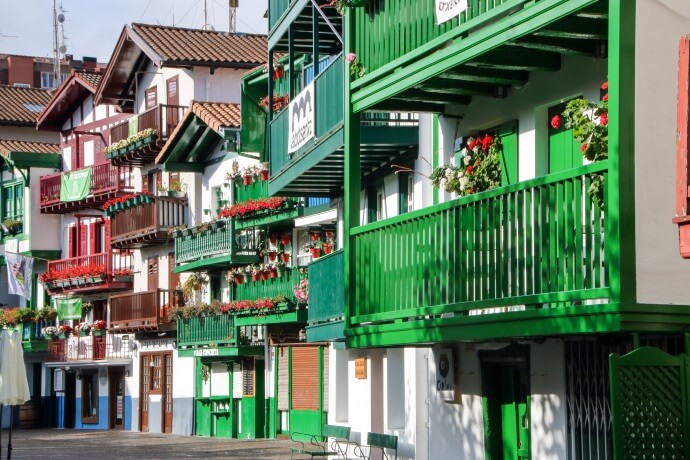
A city of three names, which is a real testimony to the mix of cultures found in the region! Located less than 1h30m from Bilbao, very close to the border with France, Hondarribia ("ford of sand" in Basque) is also known by its Spanish name, Fuenterrabía, or by its French name, Fontarrabie.
This ancient town is located at the mouth of the Bidasoa River in Gipuzkoa, Basque Country, and given its strategic location, it was for several times the site of some devastating battles. Four kilometers to the north is the easternmost point of the Cantabrian Sea, a wild location called Cape Higuer.
Hondarribia is a land of strong, determined people, who at the same time can be extremely caring and welcoming, with a strong attachment to their city. The walled historic center dating from the 17th century has been considered Historic Artistic Monument, and at its center you will find the quaint Plaza de Armas, with its nearby Santa María de la Asunción church, a gem from the 15th century. However, the main eye-catchers in Hondarribia are the pretty, colorful houses with their wrought-iron balconies overlooking the cobbled streets, but also the immaculate waterfront at Hondarribia beach.
The city also presents a variety of Basque cuisine that is simply hard to resist. The fresh fish from the coast is used in exquisite dishes like "kokotxas" (chunks) of hake in green sauce, grilled red bream, "marmitako" (a delicious stew of tuna and potatoes), or txangurro (spider crab).
A small city that will take you a while to explore as there are so many wonders waiting at every corner.
North is the way to go!
If you already know part of Portugal and Spain, or if what you are looking for is to be surprised in the most delightful of ways, then the North of the Peninsula is the way to go. From Portugal to Spain, you will find many amazing cities and towns, some of them as old as the world itself, and others that even though are an example of modernity, were quite skillful in keeping their traditions. Cities where people are proud of their culture, where you are surrounded by beautiful landscapes and cultural events, where most tourism relies on sustainability, and where, at the same time, everyone is welcome to experience the local life. What are you waiting for to head North?



